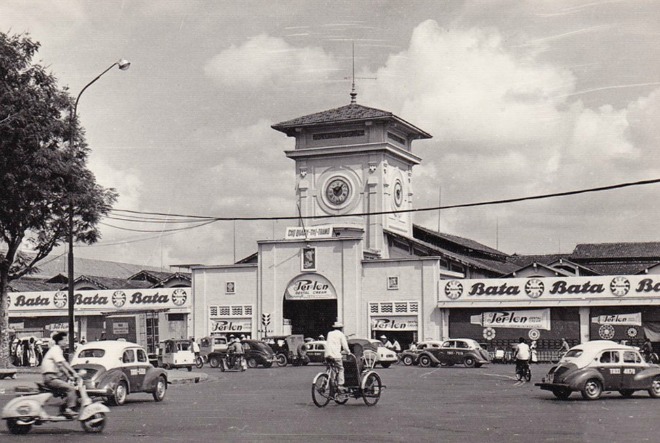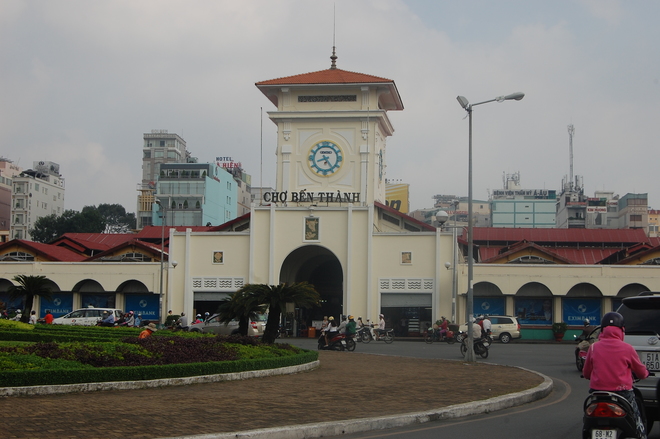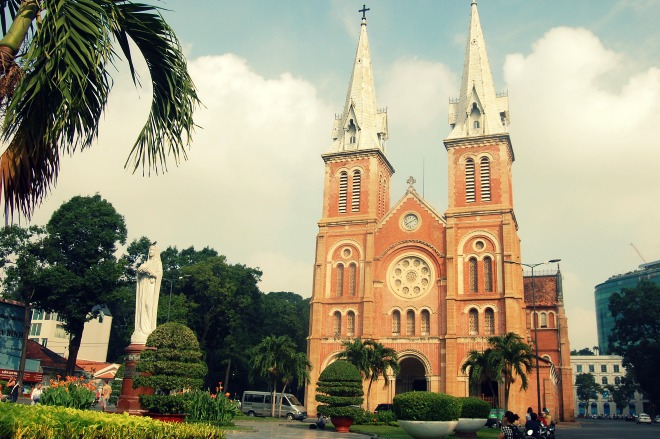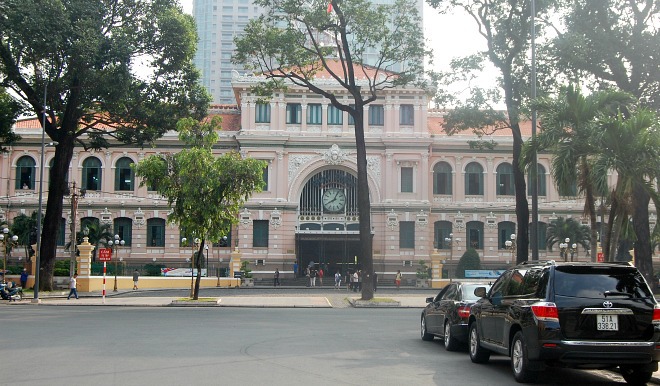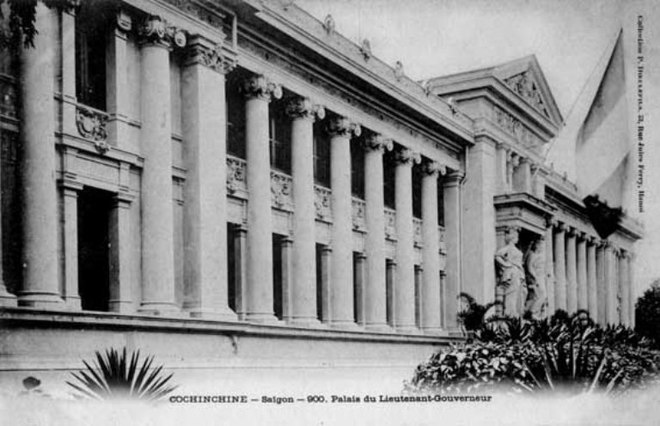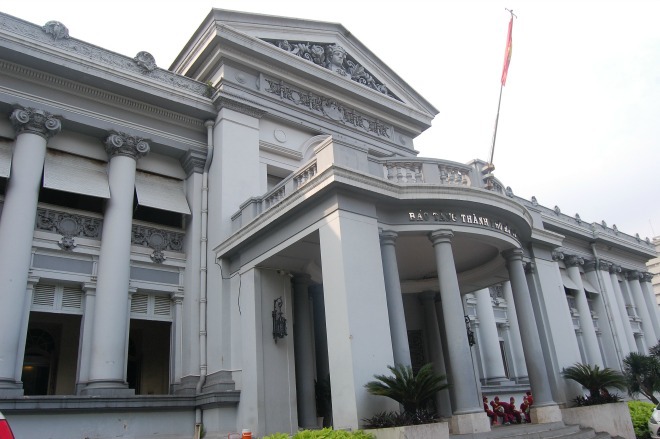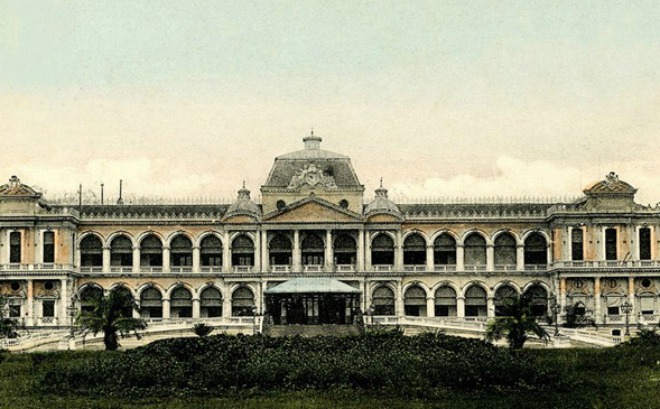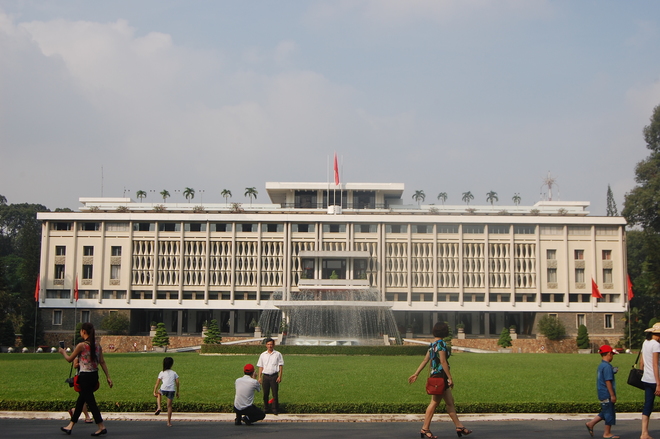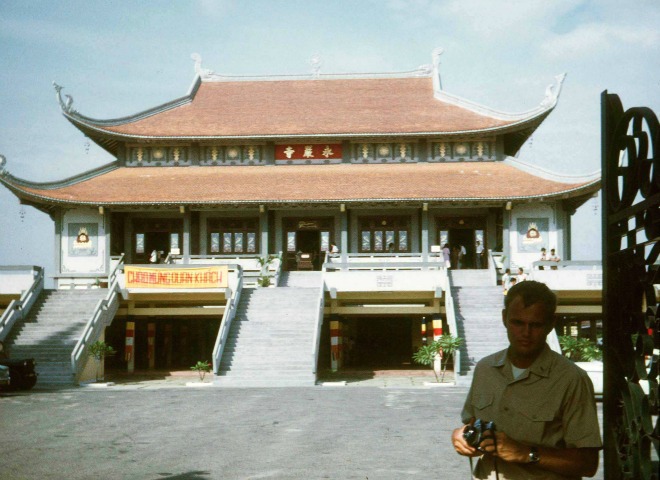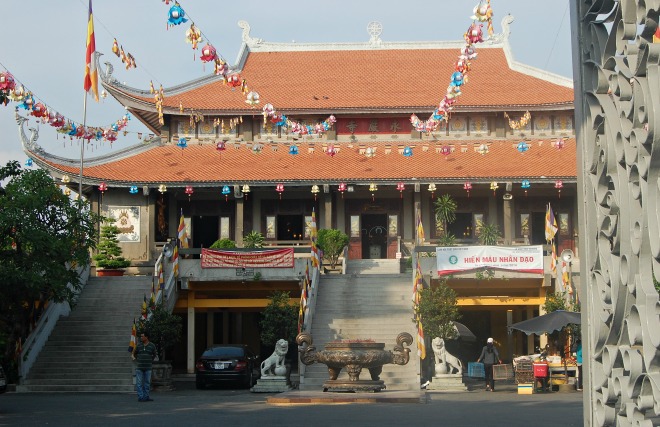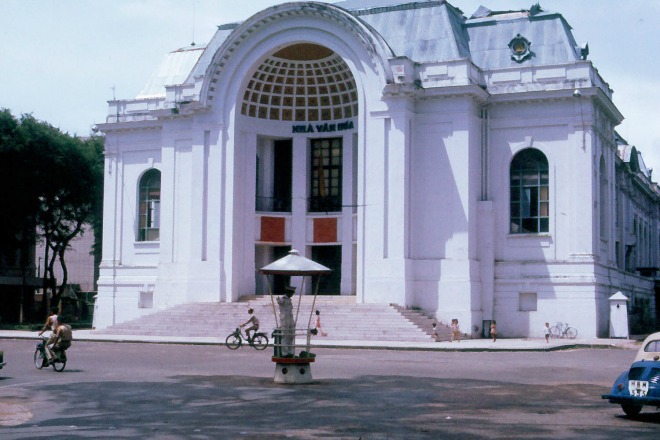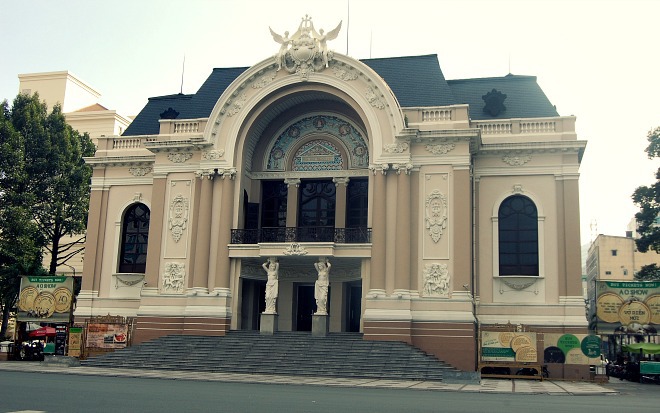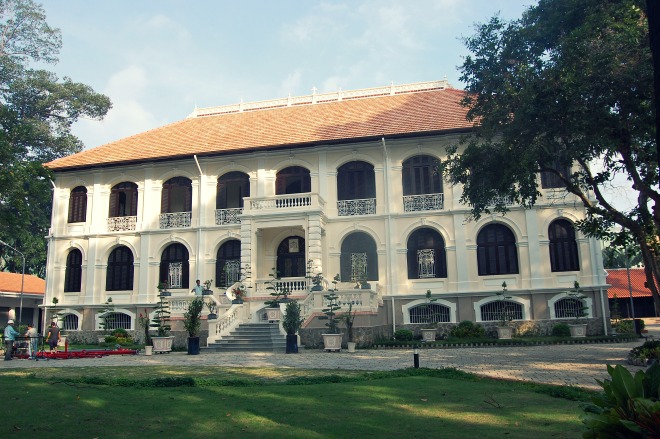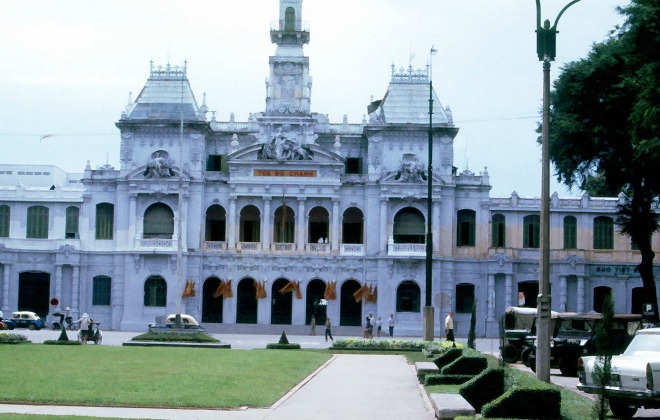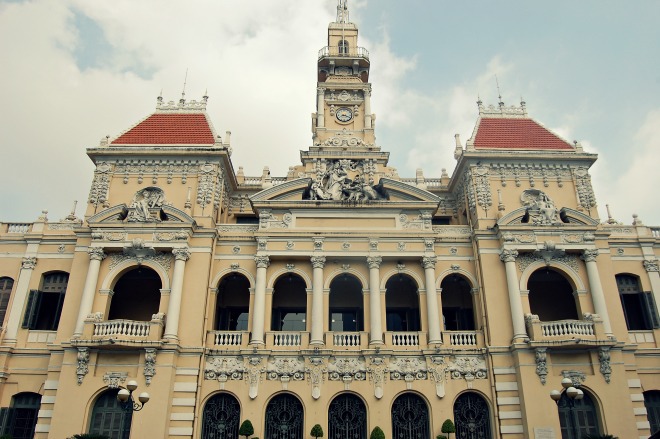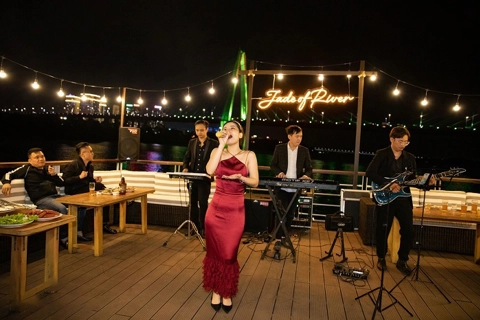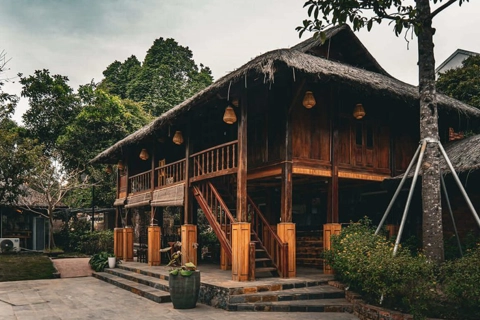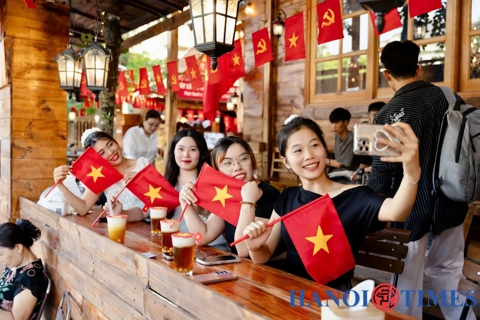Nine symbols of Saigon live forever
Ben Thanh Market, Saigon Notre-Dame Basilica, Post Office, Vinh Nghiem Pagoda and Archdiocese have been part and parcel of Saigon for centuries.
|
Ben Thanh Market was recorded by a French person in 1964 (above) and in 2014 (below). Recalling Saigon, people think of Ben Thanh Market – a special and memorable symbol. The architecture of the present day market has barely changed. Spanning over 13,000 sq.m, it has four main gates and 12 sub-gates. The second place everyone remembers in Saigon is Saigon Notre-Dame Basilica, built from 1877 to 1880 and modeled after the Paris Notre Dame Cathedral. In 1895, it had two more bell-towers, each 57.6 m high. In 1958, a statue of “Our Lady of Peace” made with granite in Rome was laid on the eastern gate. On Christmas, thousands of people often gather to celebrate the festival. Saigon Post Office was built in the five years from 1886 to 1891 with a design by French architect Villedieu. It blends both European and Oriental motif and is a feature attraction of foreign visitors. HCM City History Museum was built from 1885 and completed in 1890 with design by French architect Alfred Foulhoux. It was initially a showroom which later became a private house of the Governor of South Vietnam. After 1975 it was served as a Revolutionary Museum and now the History Museum. Independence Palace, also known as Norodom Palace, was designed by French architect Hermite in 1868. In 1962, it was leveled and rebuilt based on a new design by Ngo Viet Thu and inaugurated in 1966. It has three storeys with 100 rooms and a concrete tunnel system. Independence Palace was renamed Reunification Palace after 1975. Vinh Nghiem Pagoda was built on an area of 6,000 sq.m. During traditional Lunar New Year festival or full-moon night, a large number of Buddhist followers and HCM City citizens go to the pagoda to pray for luck. The City’s theatre – Saigon Opera House - was built in 1898 and completed in 1990 to serve the needs of entertainment of the then Saigon upper class. It has undergone nearly 100 years of war with many architectural changes.
The Archdiocese (Metropolitan) of Ho Chi Minh City in No 180 Nguyen Dinh Chieu Street retains its primary architectural features of 100 years ago.
The headquarters of the municipal People’s Committee is an ancient architecture project that was built from 1898 to 1909 by designer Femand Gardes. |

